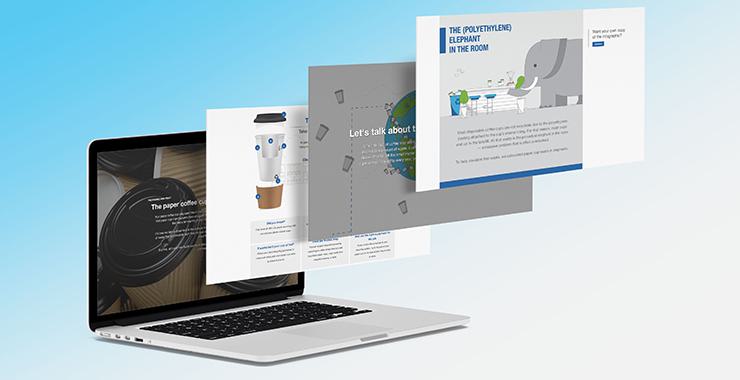5 tips for choosing the right social media channels for your B2B
According to a 2023 report, social media is the most effective revenue-driving channel for B2B marketers, but where should you start?

Social media. We all know it and we all use it, but when it comes to selling a product, building a community, or marketing an initiative, social media becomes a lot more daunting.
With 40% of B2B buyers using social media to inform their purchasing decisions, it’s important to get it right. We outline five things to think about in choosing the right channels for your B2B, with some extra insight from our Social Media Specialist.
1. Bring it back to your customer
As with many elements of B2B strategy, there’s a lot of impact when you bring it back to your customer. If you don’t know who they are, how they’re interacting with your brand, or what problems they’re running into, you won’t be able to offer a viable solution.
Pushpvir Singh, our Social Media Specialist, says that building trust and spreading awareness should be the goal if you’re starting out. “Finding out what your customer’s pain points are and conveying your value should be the top-of-mind priority.”
Earlier this year, Forrester found that the B2B buyer landscape is changing, with millennials and Gen Z now making up 64% of business buyers. As a group that’s quicker to express dissatisfaction, with 90% sharing their negative opinions with their vendor in at least one area, these are the clues to look for, and listen to, in choosing the right channels.
2. Consider your business’ long and short-term goals
It’s worth remembering that social media is one of many moving parts that complete your B2B. As a result, you should come up with what you want to get out of your social media efforts ahead of time, so they align with your long and short-term goals.
Do you want to use social media to spread brand awareness, gain more leads, educate potential customers about your products, or something else? How can it be used as a tool to support what’s happening internally?
If you want to showcase a new look and promote the visual side of your brand, Instagram will work. If you want to start creating a community in the next three months, it may be worth going beyond the obvious choices to look at online forums and spaces like Reddit to enter relevant conversations.
As Singh says, “marketing is about getting the right message out to the right people in the right form at the right time.” Having defined goals will make that process easier.
3. Start slow
It can be tempting to set up channels in as many places as possible. Singh advises identifying one or two channels where you know your audience lives and building out from there. “Start small and focus on a few specific platforms,” he says. “Don’t think that being on ten platforms will lead to ten times the impressions.”
It goes without saying that, for the majority of B2Bs, LinkedIn will be a good place to start. A 2023 study from Content Marketing Institute found that B2B content marketers found the platform most effective both for organic content and advertising. YouTube is also a growing influence, with a 2023 Gartner study showing that YouTube informed the most recent B2B purchase decisions. It makes sense, given 91% of businesses now use video as a marketing tool.
If you’re struggling to decide, take it back to your customer. What platforms are they using and where will be best to reach them?
4. Consider your content
The content you create will impact the channels you choose. If you’re going to lean into videos, you may want to prioritize YouTube over something like Twitter (or X, if you've been keeping up).
If you want to lean into thought leadership and highlight insight from your employees, or start offering whitepapers as digital downloads, LinkedIn will fit the bill.
Also note that channels offer more than just a place to post images and copy. Instagram, for example, lets users introduce product tags, polls, and live streaming, which might fit what you have in mind. Once you've decided on the platform you want to use, ensure you're making the most of the tools on offer.
5. Monitor the market
In the same way you monitor the market to best place your products, you should monitor the social media landscape to best place your content.
Get in the habit of reading about social media trends and how channels and their algorithms are changing. Our weekly What We’re Reading post is a good place to keep up to date.
For example, just this year, LinkedIn introduced LinkedIn Pages, which “enable organizations to showcase their purpose, values, culture, and offerings,” scheduling tools, and live audio-only events.
Remember...
Social media is an ongoing process. Once you’ve chosen your channels and got some content live, review your analytics regularly and make changes accordingly. This can be done within the platform itself or with a social media marketing and management tool.
“Try and bring it as close to your business and social media goals as possible,” Singh says. “If that's to spread awareness, check impressions. Look at how people are interacting with the post. If you really want to get qualitative, look at what kind of questions and comments you’re getting on social media, how you’re addressing them and building trust for your audience.”
Make sure your channels look the part.
Read our post on choosing the right images for your brand or start a conversation with us to see how we can kick-start your social media strategy.

